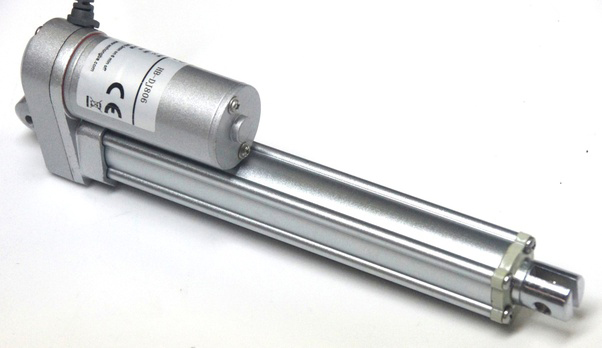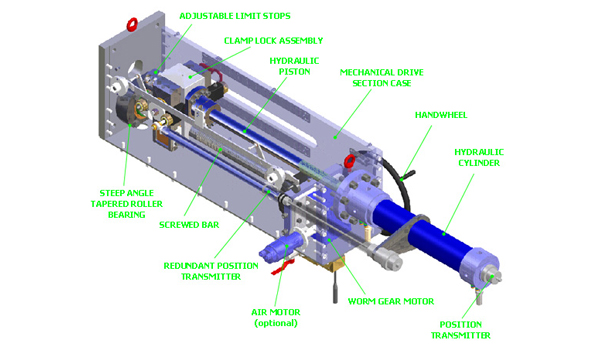Actuator


Depending on the actuation type
- Linear actuator - actuating movement in a straight line
- Rotary actuator - For continuous angular movement
- Semi rotary actuator - limited angle actuation <360 degree
Depending on the power source
- Hydraulic
A hydraulic actuator consists of fluid motor that uses hydraulic power for mechanical operation. The fluid motion is linear, rotational or oscillatory which gives a corresponding mechanical motion. Compression of fluid is very difficult and any movement is gradual in nature therefore, a hydraulic actuator can exert a large force but with limited acceleration. - Pneumatic
Pneumatic actuators convert the energy from air at high pressure into rotational or linear motion. The force produced is high from a very small pressure difference and is mostly used for quick response application at the start or stop eg: main engine controls. They are safer, cheaper, and often more reliable and powerful than other actuators. These forces are often used with valves to move diaphragms to affect the flow of air through the valve. - Electric
Being one of the cleanest forms of actuating devices, electrical energy is used as a power source. Electric energy is used to control a motor that opens and closes valves - Thermal or magnetic
These are compact, lightweight, economical actuators with high power density that can be energized by thermal or magnetic energy. Shape memory alloys are used for the construction of these actuators. - Mechanical
Mechanical actuators convert one form of mechanical movement into another. Working on a combination of elements like gears and train or pulley-chain. Both rotational and linear movement is possible with such arrangement. The powering system may be physical or sometimes electrical too.
